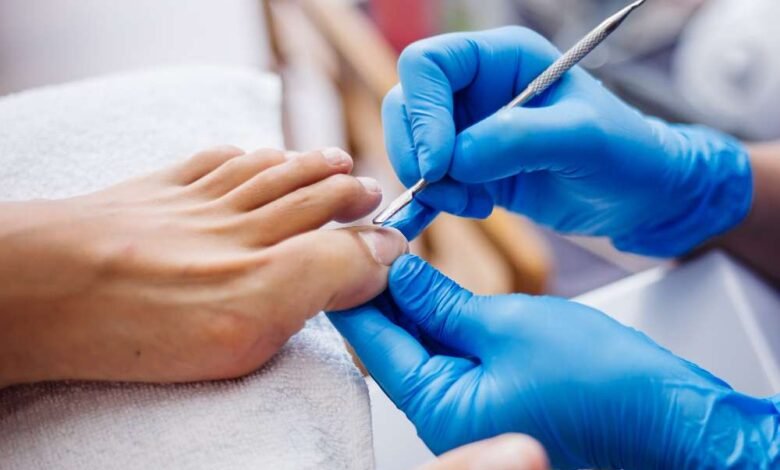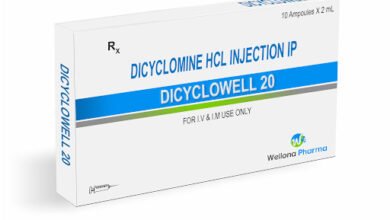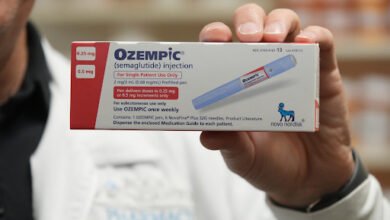Toenail fungus laser treatment: How Effective is it?

Onychomycosis, or toenail fungal infection, is medically treated with laser therapy. Before nail fungus infections improve, multiple laser surgery for toe fungus sessions is typically necessary. Laser therapy for toenail fungus may require six to eighteen months of continuous treatment.
Although adverse effects, including discomfort and bleeding in the nail’s surrounding area, are rare, laser treatments for toenail fungus are considered safe. The FDA in the United States has approved laser therapy as a treatment for toenail fungus.
What you should know about using laser treatments to cure toenail fungus is covered in this article.
How Is Toenail Fungus Treated Using Laser Therapy?
Laser treatment and toenail fungus can be treated using a variety of laser treatments, some of which utilize light and others which use carbon dioxide (CO2). Laser equipment releases thermal energy pulses. The laser is aimed to allow heat to pass through the toenail and into the nail bed, the location of the fungus, to treat onychomycosis.
CO2 lasers or yttrium-aluminum-garnet (YAG) lasers with wavelengths of 870 nm, 930 nm, or 1320 nm are employed for this treatment. Heat-induced gasification and breakdown of the diseased tissue destroy the fungus and the surrounding skin and nails. Additionally, the heat from the lasers sterilizes the area, inhibiting fresh fungus development.
When applied properly, laser therapy doesn’t release enough energy to destroy every piece of tissue or infection. As a result, further care is typically required. It’s doubtful that you will be healed or remove nail fungus with laser with just one session of laser therapy, as the infection can partially survive the treatment even while the growth of the fungal organisms is hindered and some of them are destroyed.
How Effective Is Laser Treatment for Fungal Nail Infections?
Laser treatment for fungal nail infections can be effective in many cases. It’s a non-invasive option that targets the fungus directly, and some people see significant improvement in the appearance and health of their nails after several treatment sessions.
However, The success of laser treatment can depend on the type and severity of the fungal infection. The FDA has approved several laser devices, such as PinPointe Footlaser, GenesisPlus, and Noveon, to treat toenail fungus. These devices may result in a “temporary increase in clear nails in patients with onychomycosis,” according to the FDA’s clearance criteria.
There is a high cure rate, and most patients experience considerable improvement with laser therapy. At 16 weeks, one researcher found a 61% cure rate. After 180 days, a different study revealed a 30% cure rate and 91% clinical improvement. After laser treatment, most of the tests don’t find any signs of infection.
What Is the Difference Between Laser Therapy and Other Treatments?
For nail fungus and laser treatments usually work better than traditional methods.
Oral antifungals or topical (for the skin) antifungals can occasionally be used to treat different types of fungal infections or nail fungus infections. Prescription and over-the-counter (OTC) solutions are also available. Oral antifungals can have systemic or whole-body side effects and are not always effective in treating toenail fungus. Although topical therapies are considered safe in general, they may not work.
Studies have indicated that topical therapy can reduce toenail fungus by around 45%, while oral medication can reduce the condition by about 40% to 66%.
On the other hand, there appears to be variation in the effectiveness of these various treatments. It can be challenging to use them consistently without experiencing negative effects. Combining treatments will work better than applying just one.
Does Toenail Fungus return following Laser Therapy?
Following laser therapy, toenail fungus may reappear. Even after receiving oral antifungal therapy, toenail fungus recurs frequently; research has shown that between 10% and 53% of patients experience a progressive recurrence of the fungus after it has been eradicated. According to researchers, More research is required to ascertain the long-term efficacy of laser treatment for nail fungus and pinpoint the best tools for treating fungal infections.
The FDA has approved several laser systems for the short-term cosmetic treatment of toenail fungus. Since there currently needs to be more data to support a permanent cure for the infection, all fungicidal treatments have yet to be licensed.
What can you expect from Laser Therapy?
Your doctor will inquire about your symptoms during your initial appointment for laser nail fungus treatment. Toenail fungus is usually diagnosed by looking at the nail, although a sample may need to be examined under a microscope.
A medical professional like a podiatrist, family doctor, or dermatologist will administer your treatment. On the day of your laser treatment or a few days beforehand, you may also have a procedure to remove dead skin (debridement) and cut your toenails.
Your foot will be washed with a sterile solution just before the operation and placed in an accessible area so the medical professional may point the laser at it. The damaged nails will be covered with the laser, and if there is a possibility that a fungus may be developing there, the non-affected nails may also be covered with the laser.
The danger of adverse effects is decreased by minimizing skin heat through specific wavelengths or by pulsing the laser. Laser therapy usually takes 30 minutes or less each session.
Also Read: How to Get Rid of Fungal Infection in Hands?
How Do You Know That The Laser Therapy Worked For You?
Even while some patients find that their infection clears up after just one treatment, other sessions may be necessary, depending on the outcomes.
Even with successful treatments, an infected nail may not heal immediately; you may need to wait up to 12 months for the nail to grow out before determining whether the therapy was successful.
Symptoms of reduced toenail fungus following laser treatment include:
-
The loss of color of the affected toenail or toenails, either yellow, white, or brown.
-
Removal of flakes that are under or on the nail.
-
Onycholysis is the recovery of nail separation from the nail bed below.
-
Normal texture and shape of newly growing nails, free of thickness, lumps, or deformities.
What Advantages Does Laser Nail Fungus Therapy Offer?
Following are the few benefits of laser nail fungus treatment:
-
Secure and efficient.
-
The treatments take about a half an hour.
-
Very little to no discomfort (but the laser can occasionally cause heat).
-
A great substitute for potentially dangerous oral medications.
What is The Risk Of Laser Treatment?
In general, laser treatment for toenail fungus is safe. A few patients experience some degree of heat sensitivity during treatment. Nonetheless, the lower risks associated with laser therapy are one of its benefits. The risks associated with oral medicines include gastrointestinal, renal, and liver damage.
Therefore, youngsters, pregnant women, and those with any specific medical issues may find laser treatment to be safer.
Also Read: 10 Instant Home Remedies For Gastric Problem
Conclusion
There are several things to consider while considering toenail fungal infection treatment options. At the same time, topical treatments need much care and might not help much. Pills in your mouth can sometimes have unexpected problems.
While repeat toenail fungus treatment with laser might be more effective, scheduling several visits in advance could be time-consuming. The fact that some health insurance plans don’t pay the full cost of this treatment means that cost may also be an issue. Weigh each option’s advantages and disadvantages when you and your healthcare professional discuss them.
Source link
#Toenail #fungus #laser #treatment #Effective



